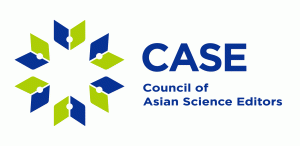Artificial intelligence in editing, writing, and reviewing manuscripts
Kihong Kim (KCSE, Ajou University, Korea)
Recently, there has been a rapid progress in the application of artificial intelligence (AI) techniques to various areas of human activities. AI refers to the system that can learn and solve problems as humans do. Language processing is an important part of human intelligence. Therefore it is natural that AI tools have been extensively developed and used in the publishing sector where language is the basic medium. AI can be used in all stages of journal publishing including peer review, editing, and production. Many big publishers such as Taylor & Francis, Elsevier, and Springer Nature are involved with developing various AI tools for publishing in collaboration with software companies. Using AI tools, an efficient and reliable automation of various tasks is possible. The list of such tasks includes technical readiness checks, plagiarism detection, detecting fabricated data and images, verification of statistical data, validation of references, summarizing the key ideas and new results of manuscripts, holistic review of manuscripts, selection of appropriate peer reviewers, scope matching and journal recommendation to authors, copy-edit level recommendation, and automated copy editing.
Many AI tools are currently implemented in journal publishing. UNSILO Manuscript Evaluation is a manuscript analysis tool which can provide main statements, overview, and summary of manuscripts. Using this, a holistic comparison of the content with those of a large number of other papers can be made. It is also possible to detect plagiarism and internal conflicts of the manuscripts. This kind of tools can be useful to researchers and authors as well as to editors and publishers. A tool named Smart Suite 2.0 by Cenveo provides an automatic conversion of a submitted manuscript to an appropriate XML file as well as the automation of manuscript editing and production. AuthorOne by Enago is a tool that can provide manuscript screening, journal recommendation, scope intelligence, concept intelligence, copy-edit level recommendation, and AI copy editing. Editorial Manager by Aries Systems is a manuscript submission and peer review tracking system. Editorial Manager by Penelope.ai provides automated checks of ethics, declarations, title page, abstract, figures and tables, referencing, statistics, and metadata. Wizdom.ai and Taylor & Francis are involved with the development of a software that can deduce the relationships among various fields and concepts through a mining of the database of papers. Using such tools, one can visualize emerging research trends from full text analysis of submitted articles. We anticipate that such kind of tools can be used in writing research proposals and review papers. Verification of statistical data presented in the manuscripts is an especially important function of AI tools.
AI tools can deduce the relevance of a paper through an extensive comparison with other papers, find suitable and relevant references, suggest new directions of research, and complement the current way of evaluating journals and researchers based mainly on the number of citations. In order to avoid biases, it is essential to train AI tools using unbiased data. In conclusion, we anticipate that the application of AI technology to editing and publishing of scholarly journals will be expanded to a great degree at a rapid pace. It is expected that AI technology will completely change the ways scientists do research and write papers and publishers produce journals in a not very far future. Everybody including those in small publishers needs to be alert to AI technology.
